No products in the cart.
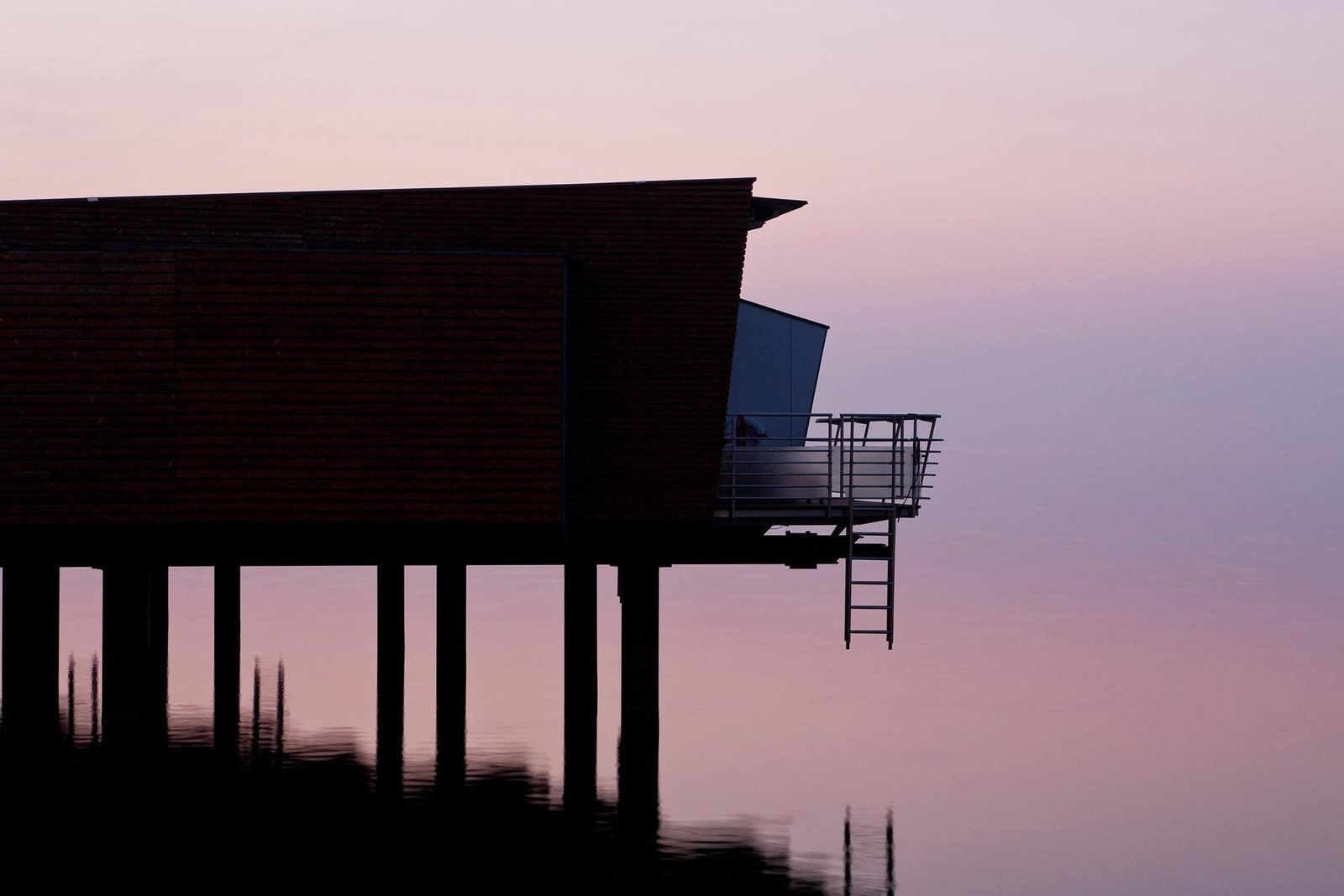
20 Examples of Modern Architecture to See in Switzerland
Switzerland’s modern architecture delights with surprise. Whether you’re curious about Le Corbusier’s pioneering modernism or excited to explore the fresh ideas of today’s top architects, these Top 20 Modern Swiss Buildings are perfect for any design lover. So, grab your curiosity (and your camera!) and take a relaxed tour of these Swiss gems that are reshaping and reinspiring how we see space, light, and form. Time to leave the Middle Ages and jump into modernity…Enjoy the adventure!
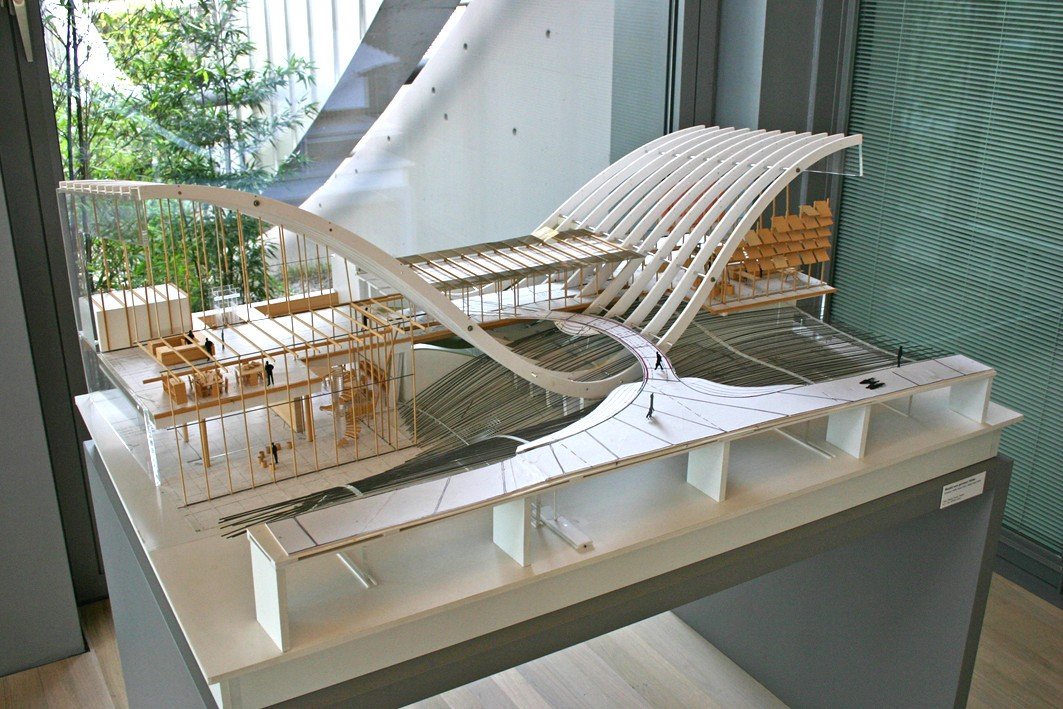
Photo courtesy of Wikipedia
1. Zentrum Paul Klee (Bern)
Designed by the renowned architect Renzo Piano, the Paul Klee Center is an architectural masterpiece that harmoniously blends with the surrounding landscape. Its wave-like structure and sustainable design house an extensive collection of works by the Swiss painter Paul Klee, making it a cultural landmark in Bern.
- Location & Canton: Bern, Bern
- Why Visit? Designed by the Building Wizard himself, Renzo Piano, this wave-like museum is a tribute to the Swiss painter Paul Klee and blends seamlessly into the rolling Bernese landscape as a study in harmonious design. Renzo Piano’s creation seamlessly integrates with its parkside setting, providing a tranquil space for art and contemplation.
- Architectural Style: Contemporary Modern – characterized by gentle curves, natural light, and a playful interplay of materials
- How to Visit? Located on the outskirts of Bern’s city center, it’s accessible by tram and bus. The museum offers daily guided tours that delve into both the art and the architectural innovation behind the building.
- Insider Tips: Explore the surrounding parklands before or after your visit – the gently sloping landscape complements the museum’s serene design perfectly. Check the rotating exhibits—they often feature fascinating modern art beyond Klee’s work. Check the museum’s calendar for special exhibitions and guided tours.

Photo courtesy of Hôtel Palafitte, Neuchâtel | Neuchâtel Tourisme (CH) | Jura & Trois Lacs
2. Palafitte Hotel (Neuchâtel)
- Why Visit? The only overwater hotel in Europe, this luxury retreat is built on stilts over Lake Neuchâtel, offering an unforgettable lakeside escape.
- How to Visit? A short taxi ride from Neuchâtel’s train station.
- Tip: Book a lake-facing bungalow for the best sunrise views from your private terrace.
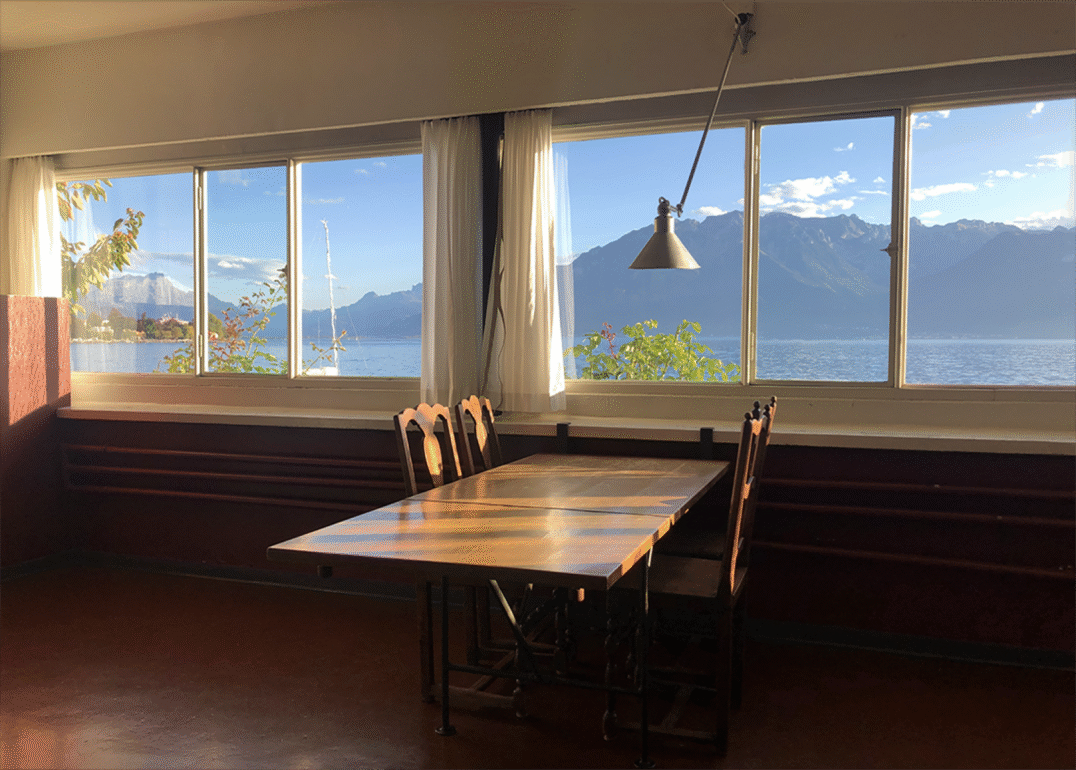
Photo courtesy of www.villalelac.ch
3. Villa “Le Lac” (Vevey)
- Why Visit? Designed by Le Corbusier, this minimalist lakeside house showcases the beginnings of modern architecture in 1923. It utilizes 3 longstanding principles of modern minimal design – the open plan, a roof garden, and long window connecting the building with its environment.
- How to Visit? Open for guided tours in summer. Located a short walk from Vevey’s train station.
- Tip: Pair your visit with a trip to Charlie Chaplin’s World museum nearby.
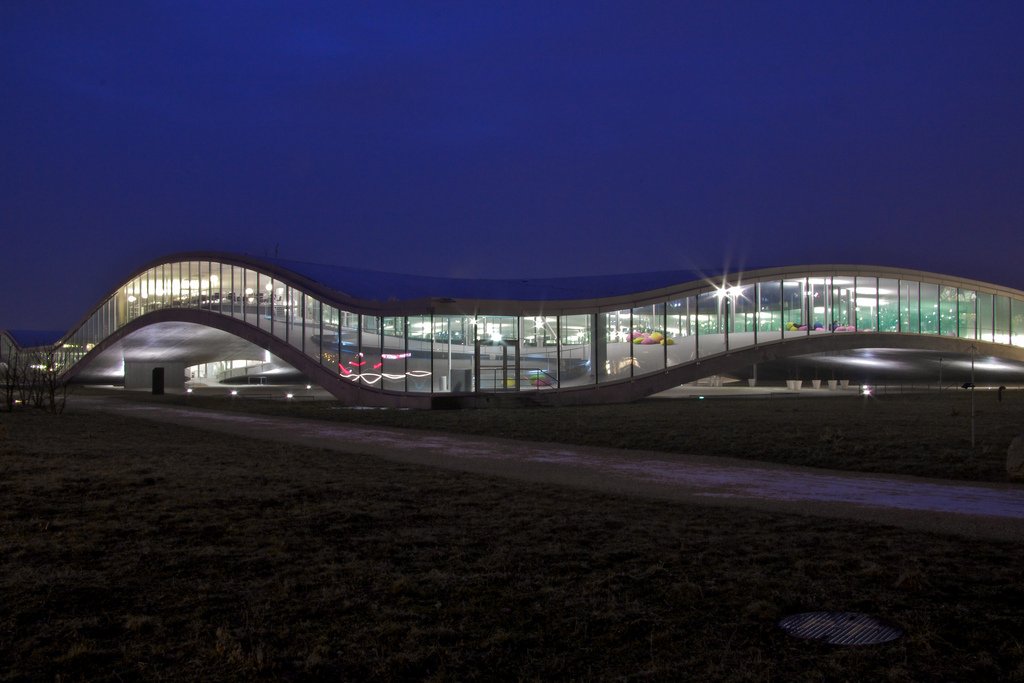
Photo of the Rolex Learning Center courtesy of Wikipedia
4. Rolex Learning Center (Lausanne)
A futuristic hub of education and research, the Rolex Learning Center at the École Polytechnique Fédérale de Lausanne (EPFL) was designed by the Japanese architecture firm SANAA. Its flowing, open-space concept with gentle slopes and interconnected learning areas revolutionizes traditional academic buildings, fostering collaboration and innovation.
- Location & Canton: Lausanne, Vaud Canton
- Why Visit: Designed by the internationally acclaimed Japanese duo SANAA, this building redefines what a university learning space can be. Its undulating, open-plan design encourages collaboration and inspires creativity – a must-see for design aficionados and students alike. The EPFL Library and The Rolex Learning Center are open to the public from 7am – midnight.
- Architectural Style: Contemporary Modern – fluid forms with an emphasis on light and transparency
- How to Visit? Located on the EPFL campus, the center is easily reached by Lausanne’s metro or local bus service. Campus tours often include a visit to this architectural marvel.
- Insider Tips: Visit on a sunny day and take a stroll through the campus grounds – the building’s fluid integration with nature is best experienced in natural light. Or try in the late afternoon to see the sunset reflecting off its curved surfaces.
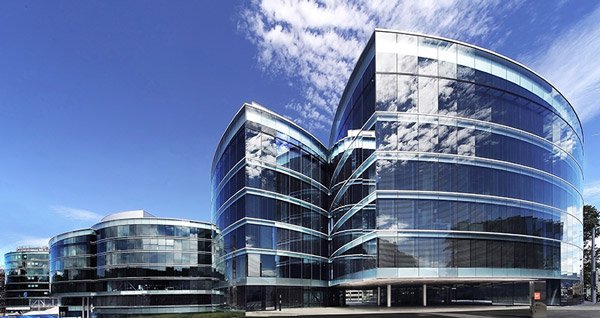
Photo courtesy of Sciboz Gérald | 2m-ingenieurs.ch
5. Maison de la Paix (Geneva)
- Location & Canton: Geneva, Canton of Geneva
- Why Visit? A striking example of modern office architecture, Maison de la Paix was designed by Herzog & de Meuron to encapsulate transparency and openness – values at the heart of contemporary Swiss design. Its sleek façade and thoughtful spatial organization make it a noteworthy study for both architecture students and casual visitors.
- Architectural Style: Contemporary Modern – characterized by clean lines, extensive use of glass, and a fluid integration of indoor and outdoor spaces
- How to Visit? Located in Geneva’s business district, it’s easily accessible by tram or bus. While it primarily functions as an office building, its public areas are often open during architecture tours or design open-house events.
- Insider Tips: Keep an eye out for public lectures or exhibitions hosted in the building’s communal spaces – these events often offer deeper insights into its design philosophy and innovative construction techniques.
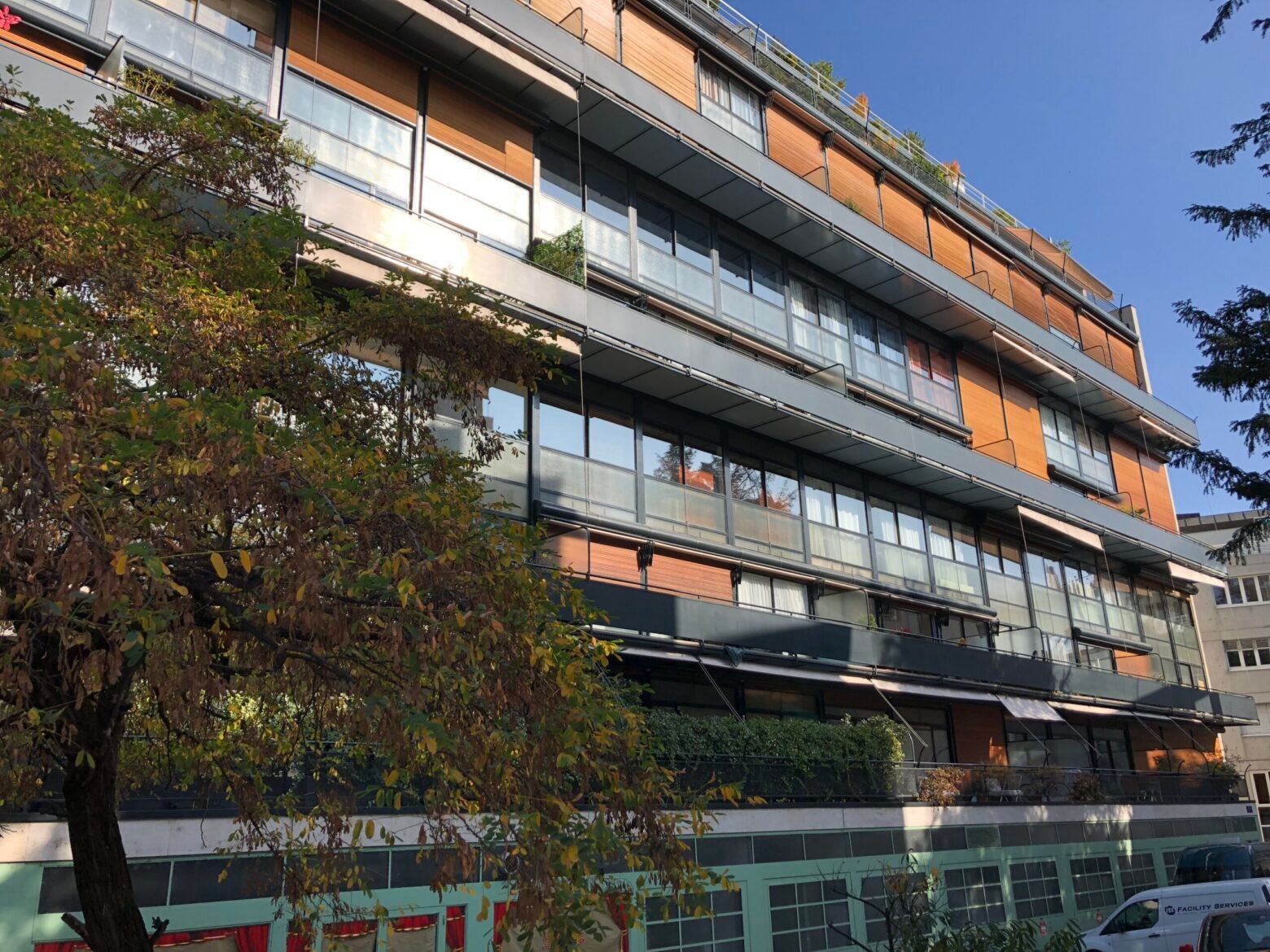
Photo courtesy of Wikipedia
6. Immeuble Le Corbusier (gENEVA)
- Location & Canton: Geneva, Canton of Geneva
- Why Visit? Although not as globally renowned as some of his French works, this residential apartment building reflects Le Corbusier’s pioneering modernist ideals right in his native land. It offers visitors a tangible connection to the architect’s revolutionary approach to urban living and design.
- Architectural Style: Modernist – clean lines, open floor plans, and an emphasis on functional form built from 1930 – 1932.
- How to Visit? Situated in central Geneva, it’s accessible via the city’s efficient tram and bus network. While it remains primarily a residential building, exterior views and occasional guided architectural tours provide insight into its design.
- Insider Tips: Check local listings for architecture-focused walking tours in Geneva that spotlight Le Corbusier’s legacy and other modernist gems around the city.

Photo courtesy of Wikipedia
7. Pavillon Le Corbusier (Zurich)
One of the most architecturally significant buildings in Switzerland is Le Corbusier’s Pavillon (Pavillon Le Corbusier) in Zurich. Designed by Le Corbusier, one of the most influential architects of the 20th century, it represents his vision of modernism, combining steel, glass, and vibrant colors in a unique modular design. Completed in 1967, it was his final architectural work and a masterpiece of modernist architecture.
- Why Visit: Le Corbusier’s last architectural work, this vibrant steel and glass structure embodies his visionary design principles.
- How to Visit: Located in Zurich’s Seefeld district, it operates as a museum dedicated to his work. Open seasonally (April–November).
- Tip: Take a guided tour to fully appreciate the innovative design.
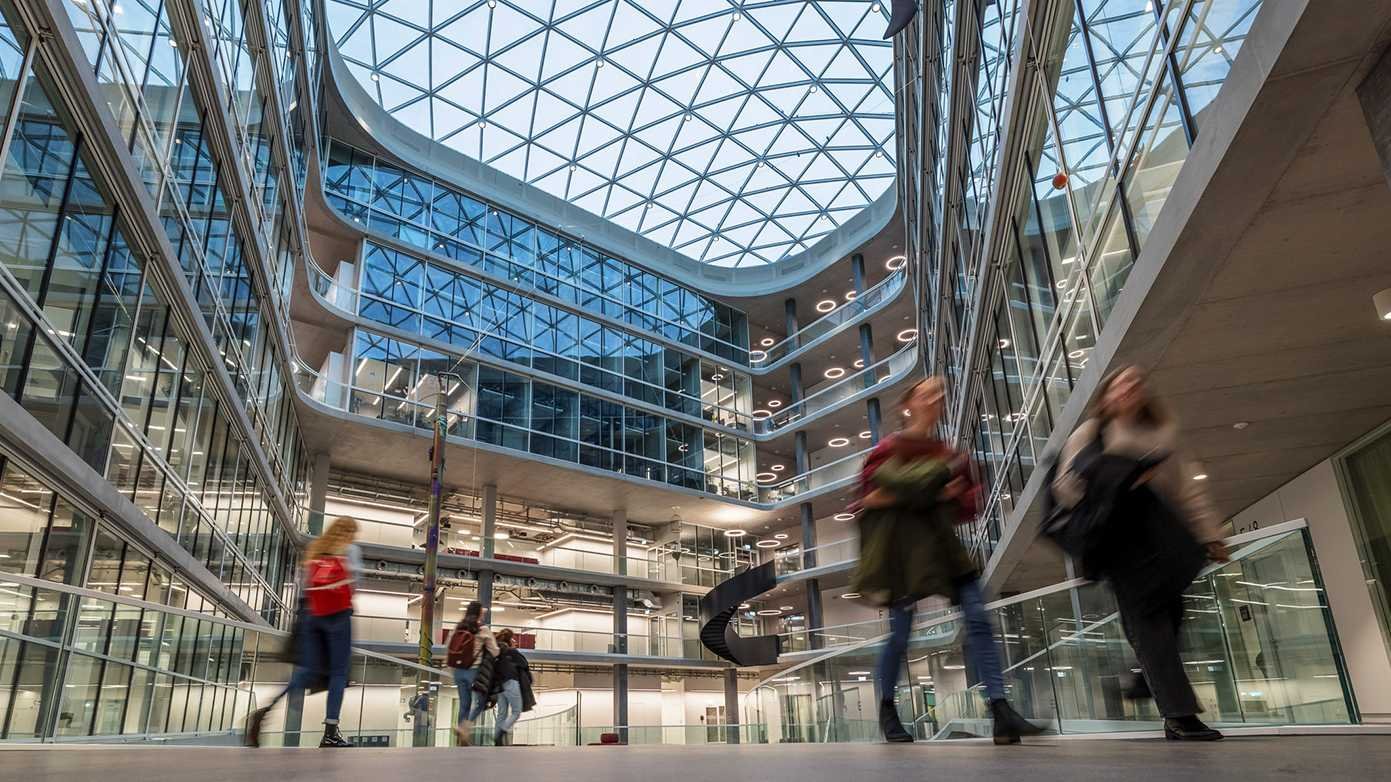
Photo courtesy of ETH
8. ETH Zurich Main Building (Zurich)
- Why Visit: One of Europe’s top universities, ETH Zurich’s neoclassical main building was designed by Gottfried Semper, also known for the Semper Opera in Dresden. An impressive renovation blends modern vibes with its neoclassical foundations.
- How to Visit: A short tram ride from Zurich’s main station. The courtyard and some areas are open to the public.
- Tip: Grab a drink at the rooftop Dozentenfoyer café for spectacular city views!
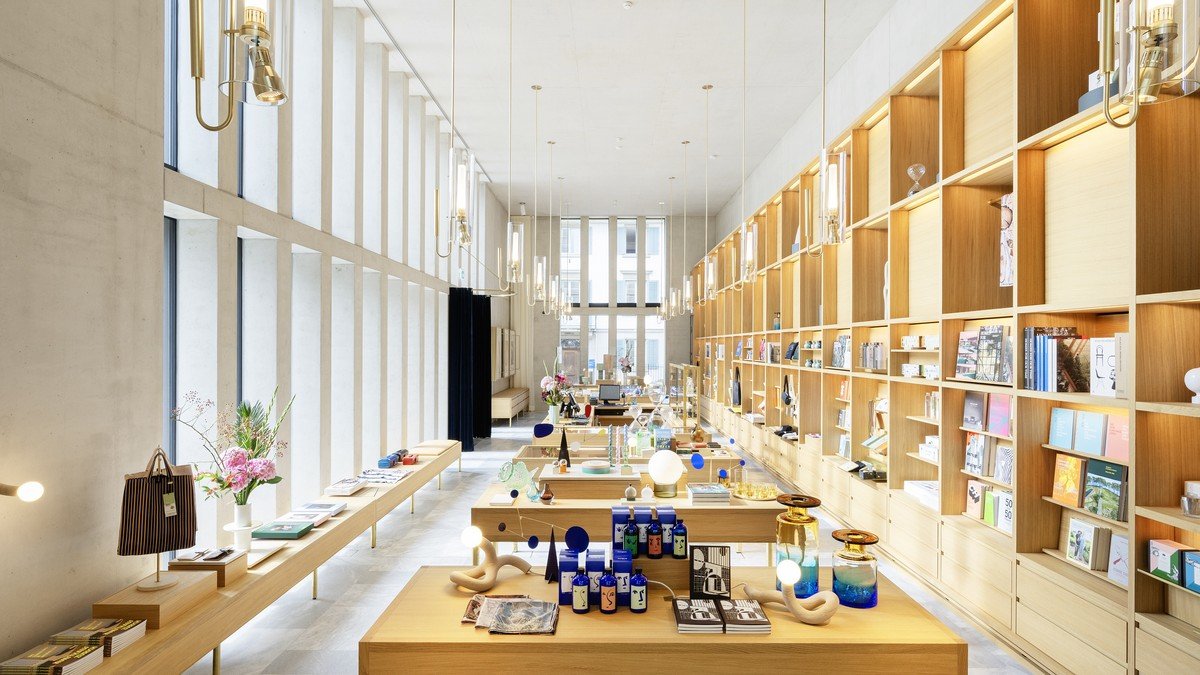
Photo courtesy of www.kunsthaus.ch
9. Kunsthaus Extension (Zürich)
- Location & Canton: Zürich, Canton of Zurich
- Why Visit? Blending historic roots with contemporary vision, the extension to Kunsthaus Zürich is a stellar example of sensitive modern intervention. The new spaces, designed by renowned modern architects (with design input from international luminaries like David Chipperfield), offer fresh perspectives on how museums can interact with their urban context.
- Architectural Style: Contemporary Modern – a dialogue between classic museum architecture and innovative, minimalist design
- How to Visit? Centrally located, the Kunsthaus is within walking distance of Zürich’s main attractions and easily accessible via tram. Guided tours often highlight the contrast and continuity between the original structure and its modern extension.
- Insider Tips: Plan your visit during a quiet weekday to fully appreciate the museum’s interplay of old and new, and don’t miss the rooftop views if they’re available during special events.
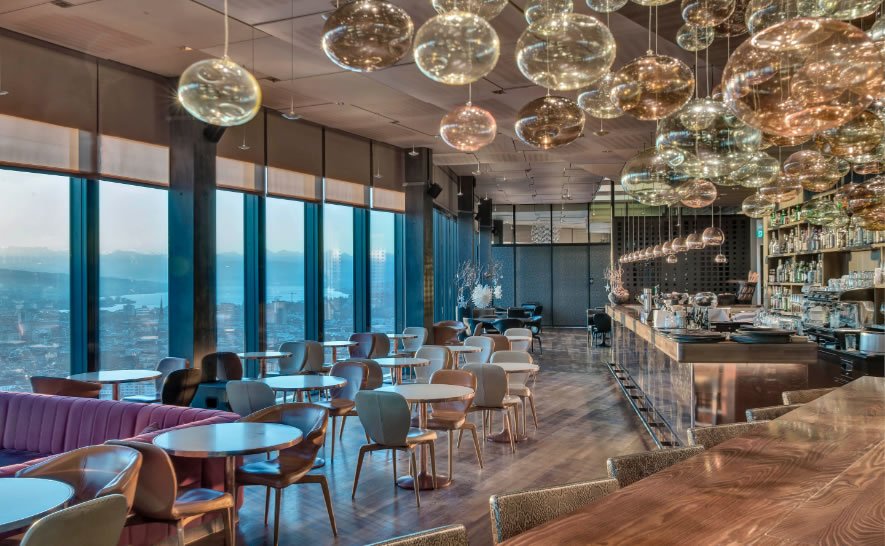
Photo courtesy of primetower.ch
10. Prime Tower (Zürich)
Standing at 126 meters, the Prime Tower is one of the tallest buildings in Switzerland and a symbol of Zurich’s modernity. Designed by Gigon/Guyer Architects, this sleek glass skyscraper reflects the city’s economic power and contemporary urban development, offering panoramic views from its top floors.
- Location & Canton: Zurich, Zurich
- Why Visit? Standing as one of Switzerland’s tallest buildings, Prime Tower epitomizes modern urban design. Its sleek, glass-clad façade and bold geometry contrast beautifully with Zurich’s historic districts, symbolizing the city’s forward-thinking spirit. The top floors house restaurants and bars with spectacular city views.
- Architectural Style: Contemporary High-Rise Modernism – minimalist design with a striking vertical emphasis
- How to Visit? Easily accessible on foot or via Zurich’s excellent public transit, the building is located in the vibrant business district. Guided tours of the tower’s public spaces (and occasional rooftop viewings) are available. Located in Zurich’s business district, it is easily reachable via tram or train from the main station.
- Insider Tips: Visit at dusk to see the tower’s façade illuminated against the city’s skyline for a spectacular photographic opportunity. Visit in the evening for a mesmerizing sunset and city lights view.
11. Swiss Re Tower aka “The Gherkin’s Sibling” (Zurich)
- Why Visit? Designed by Foster + Partners, this sleek glass tower is one of Switzerland’s most recognizable modern office buildings.
- How to Visit? Located in Zurich’s business district. While entry is restricted, it’s an impressive sight from the street.
- Tip: Pair your visit with a trip to the nearby Prime Tower, Zurich’s tallest skyscraper, for a drink with a view.
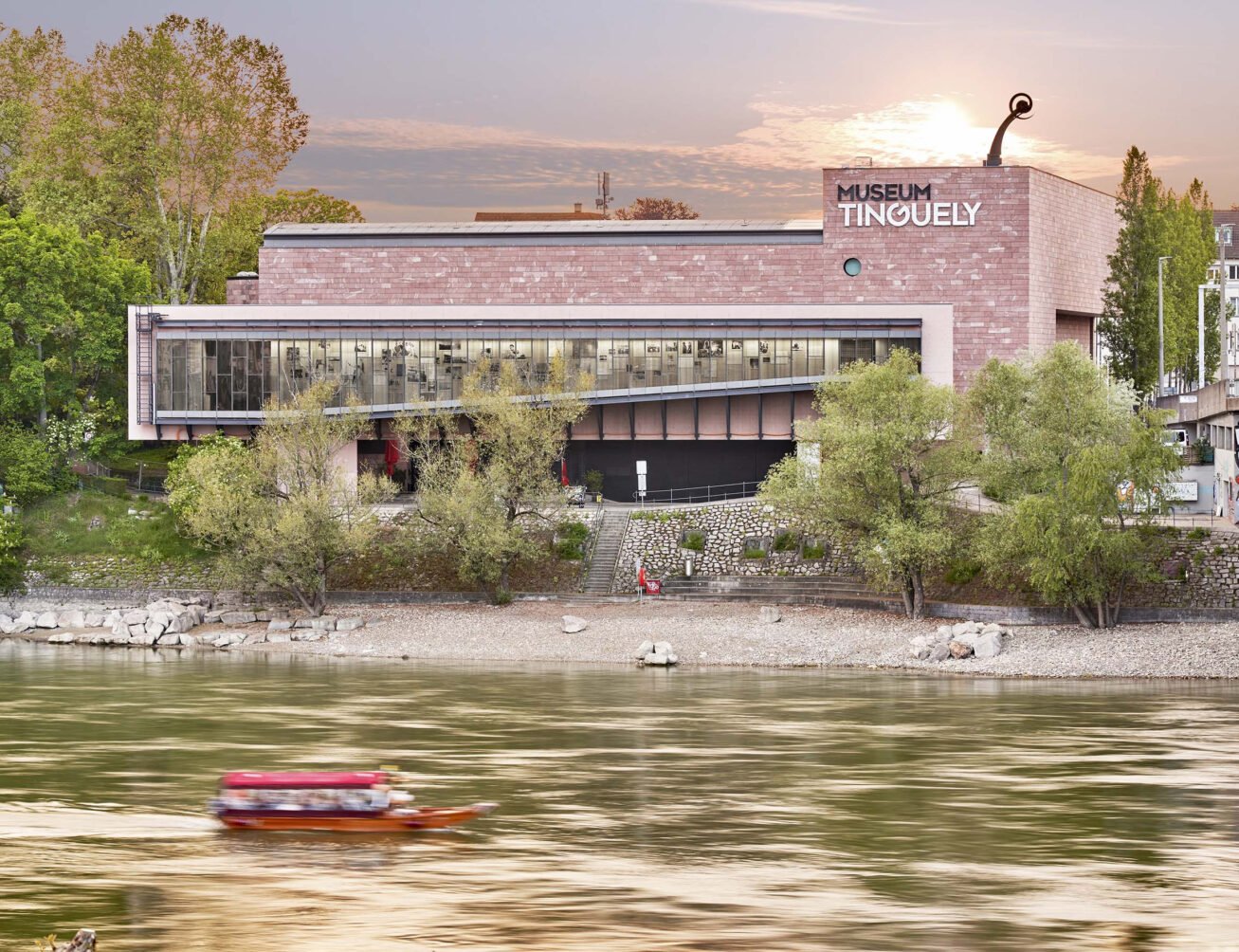
Photo courtesy of Basel Tourismus | Basel.com
12. Tinguely Museum (BASEL)
- Location & Canton: Basel, Basel-Stadt
- Why Visit? Dedicated to the kinetic art of Swiss artist Jean Tinguely, this museum is a masterpiece in its own right. Designed by Herzog & de Meuron, the building’s industrial materials and playful forms echo the spirit of Tinguely’s mechanical sculptures.
- Architectural Style: Industrial Modernism – an innovative blend of raw concrete and metal with fluid, organic forms
- How to Visit? Nestled in Basel’s cultural quarter, it’s just a short walk from the central train station. Check the museum’s website for guided tour times and special event schedules.
- Insider Tips: Pair your visit with a stroll along the Rhine – the museum’s location offers a scenic riverside walk and opportunities to explore Basel’s vibrant art scene.

Photo courtesy of Foundation Beyeler
13. Fondation Beyeler (BASEL)
- Location & Canton: Riehen (near Basel), Basel-Stadt
- Why Visit? Housed in a building designed by Renzo Piano, Fondation Beyeler is renowned for its superb collection of classical modern and contemporary art. The structure’s harmonious design – with its interplay of indoor and outdoor spaces – makes it as much a work of art as the masterpieces it contains.
- Architectural Style: Contemporary Modern – blending natural materials and expansive glass facades to create a luminous, inviting atmosphere
- How to Visit? Easily reached by bus from Basel, the museum welcomes visitors year-round. Audio guides and guided tours help illuminate the building’s design philosophy alongside its art collection.
- Insider Tips: Plan your visit during one of the museum’s temporary exhibitions for a fresh perspective on its design and collection.
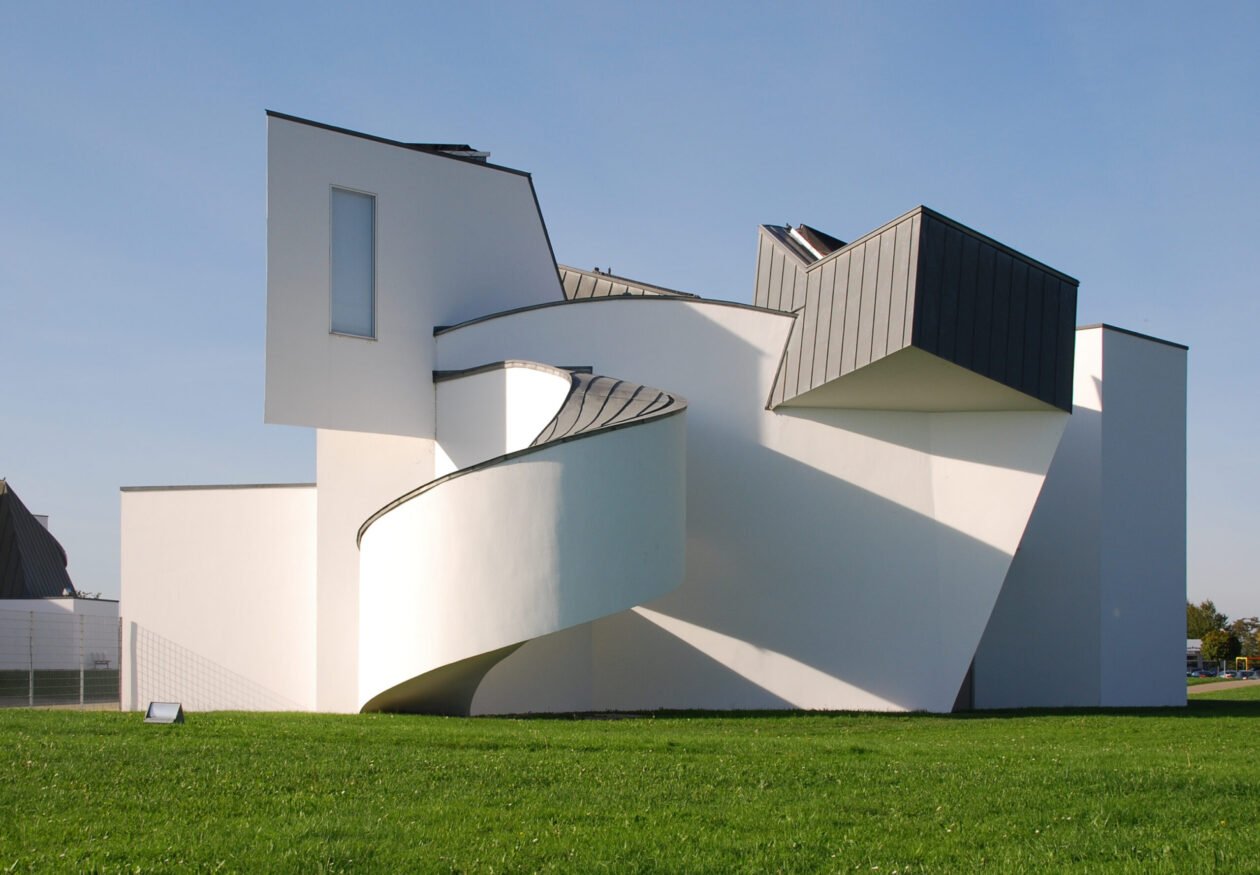
Photo courtesy of Wikipedia
14.Vitra Campus & VitraHaus (BASEL/Weil am Rhein, German border)
Although technically located just across the border in Germany (in fact a skip over from Foundation Beyeler), the Vitra Campus is closely associated with Basel and is a must-visit for design enthusiasts. Featuring buildings by legendary architects like Zaha Hadid, Frank Gehry, and Herzog & de Meuron, the campus is a showcase of cutting-edge design and architectural experimentation.
- Why Visit? Designed by Herzog & de Meuron, VitraHaus is a striking example of contemporary architecture and a dream destination for design lovers. A mecca for architecture lovers, featuring buildings by Zaha Hadid, Herzog & de Meuron, and Frank Gehry.
- How to Visit: Accessible by tram from Basel; guided tours are available. Located in Germany, just across the Swiss border from Basel. Take tram #8 to the final stop, then a short bus ride.
- Tip: Visit the Vitra Design Museum for fascinating exhibits on modern architecture and design. Visit the Vitra Campus to explore other fascinating architecture, including works by Zaha Hadid and Tadao Ando.
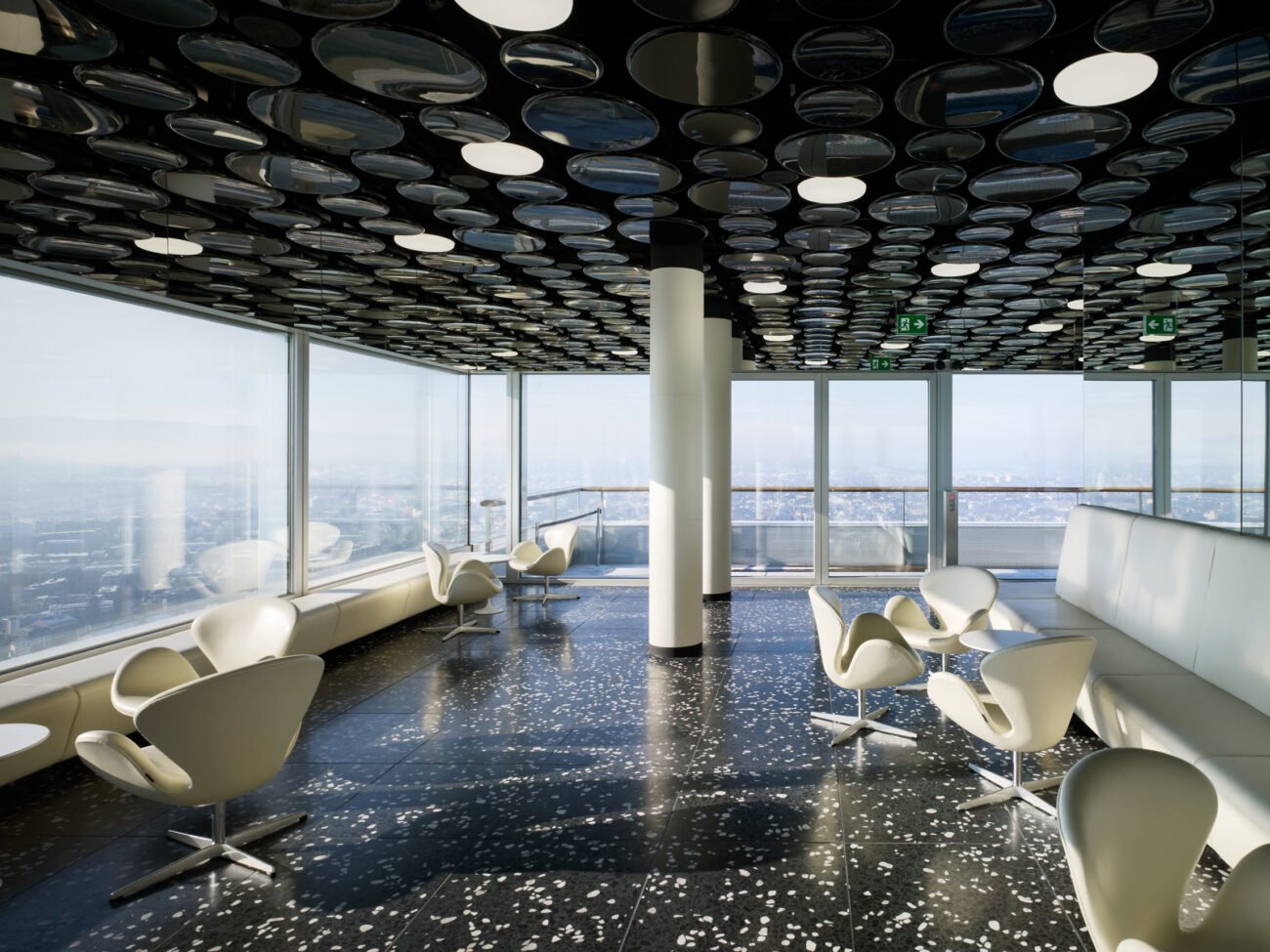
Photo courtesy of Herzog & de Meuron
15. Roche Towers (Basel)
- Why Visit: Designed by Herzog & de Meuron, Roche Towers are a pair of sleek glass skyscrapers shaping Basel’s skyline and also claims credit as Switzerland’s tallest skyscraper.
- How to Visit: No public access inside, but you can admire it from the Rhine riverbanks or take an architecture tour in Basel.
- Tip: Pair your visit with a stop at the nearby Kunstmuseum Basel for world-class art.
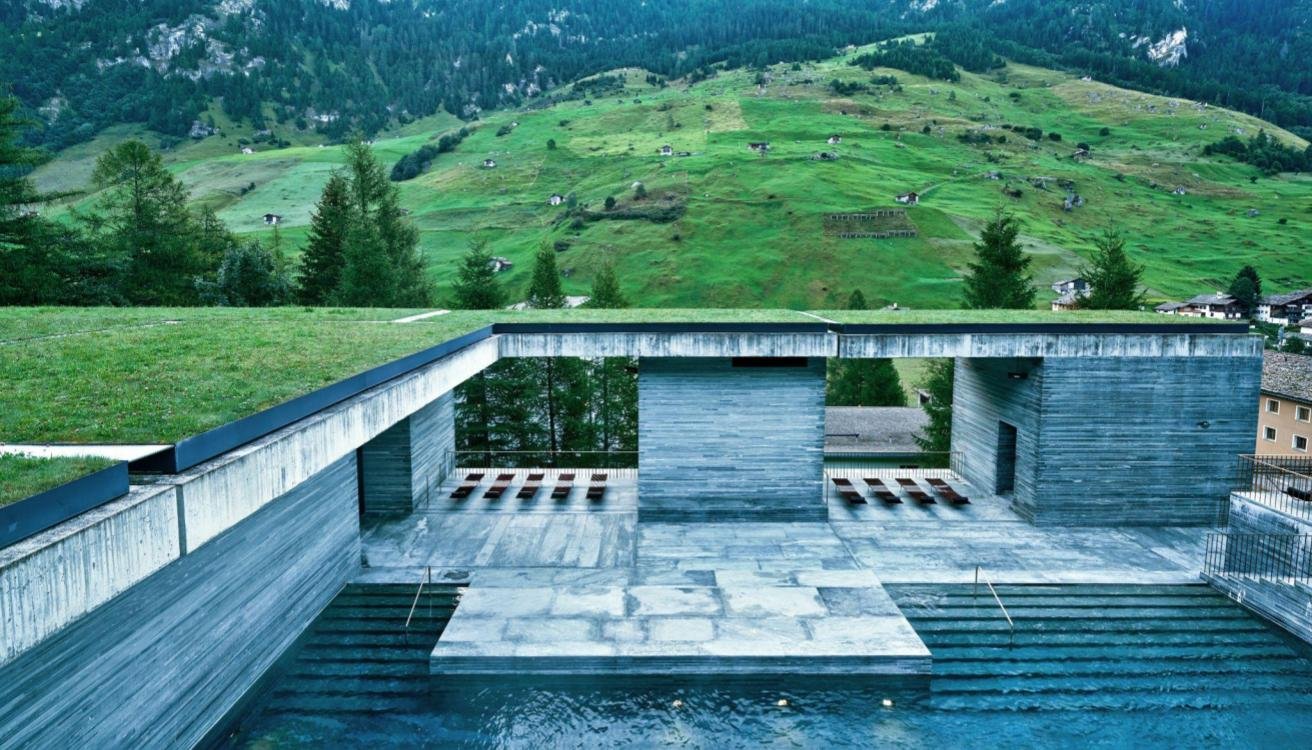
Photo courtesy of 7132 Thermal Baths
16. Therme Vals (VALS)
- Location & Canton: Vals, Graubünden
- Why Visit? A sublime retreat designed by Peter Zumthor, Therme Vals is more than just a spa – it’s an immersive experience in modern architecture and materiality. The building’s stone-clad walls and contemplative spaces have made it an international icon of spa architecture.
- Architectural Style: Minimalist Modernism – emphasizing raw materials, sensory experiences, and a seamless integration with the natural surroundings
- How to Visit? Located in the small village of Vals, it’s best reached by car or regional train followed by a short local bus ride. Reservations for entry are recommended, especially during peak seasons.
- Insider Tips: Take your time to explore both the indoor thermal baths and the outdoor relaxation areas – the building is designed to be savored slowly, almost like a meditative journey.
- Why Visit? Designed by Peter Zumthor, this stunning spa is built entirely from locally quarried stone, blending seamlessly with the Alpine landscape.
- How to Visit? Requires an overnight stay at the 7132 Hotel or a seperate day-spa reservation.
- Tip: Book a late-night spa session for a surreal, peaceful experience.
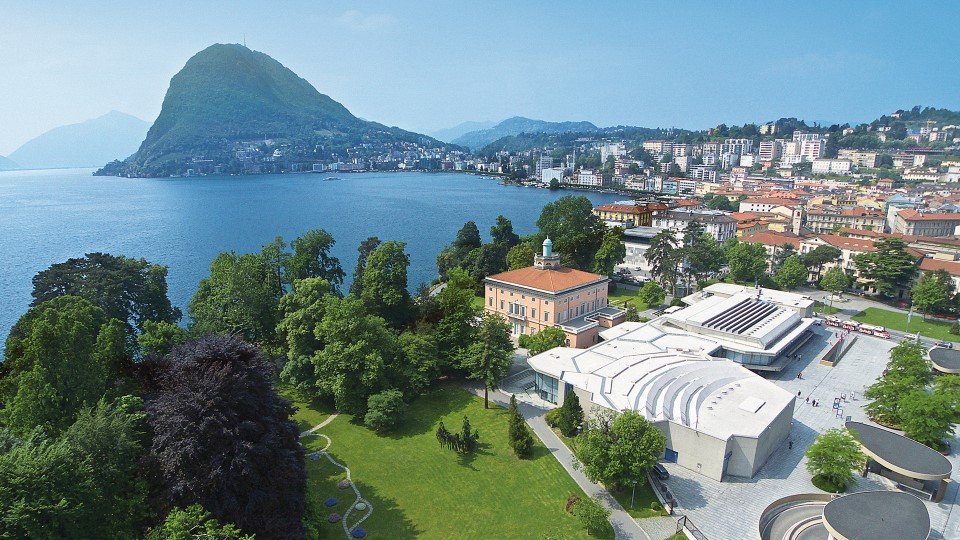
Photo courtesy of Lugano Convention & Exhibition Center and the City of Lugano
17. Lugano Convention Center (LUGANO)
- Location & Canton: Lugano, Ticino
- Why Visit? Designed by renowned Swiss architect Mario Botta, this convention centre exemplifies the marriage of functionality and sculptural form. Its bold geometric shapes and textured façade make it a standout on Lugano’s lakeside skyline.
- Architectural Style: Mid-Century Modern with a Botta twist – a fusion of strong geometric forms and a warm, material-driven aesthetic
- How to Visit? Located in downtown Lugano, the centre is accessible by local bus or on foot from Lugano’s central station. Check the centre’s event schedule – even if you’re not attending a conference, the building’s public spaces are often open for visitors.
- Insider Tips: Enjoy a coffee at one of the adjacent lakeside cafes after your tour – the panoramic views of Lake Lugano perfectly complement Botta’s bold design.
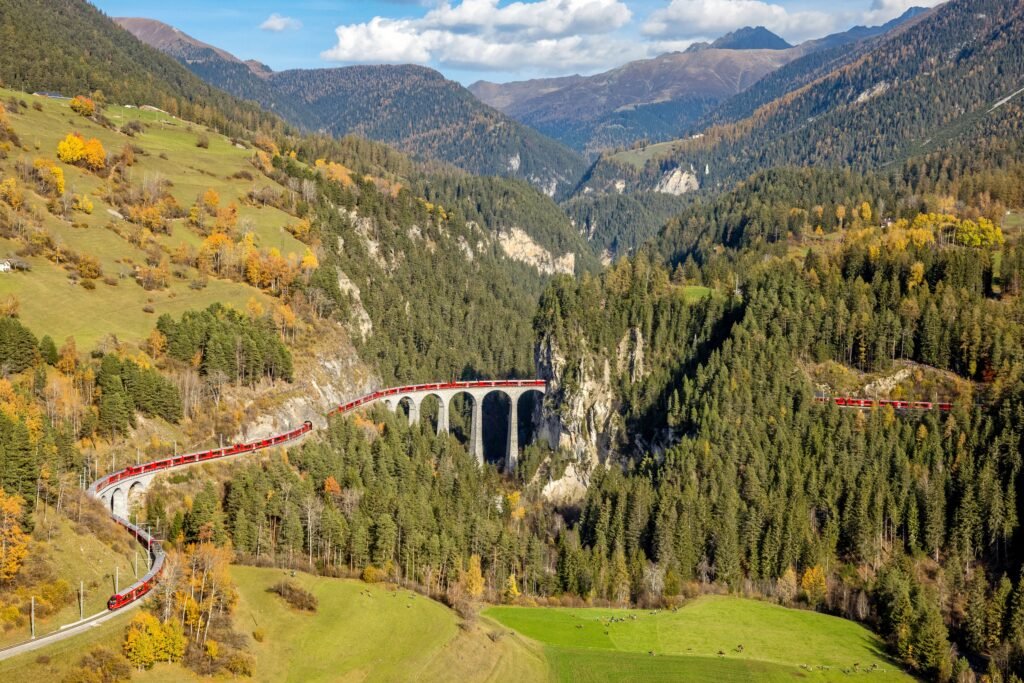
Photo courtesy of PHILIPP SCHMIDLI and Swissfederalism.ch
18. Landwasser Viaduct (Filisur, Graubünden)
- Why Visit? One of Switzerland’s most impressive railway bridges, the Landwasser Viaduct is an engineering marvel set against stunning mountain scenery. Built in 1902, on the cusp of the modern era, this structure is part of the UNESCO World Heritage Albula Railway continuing to inspire travelers and locals alike.
- How to Visit? Best viewed from Filisur. Take the Glacier Express or hike to a viewpoint.
- Tip: Time your visit for a Glacier Express crossing for the perfect photo moment!

Photo courtesy of Berie Alpine Trekking School
19. Monte Rosa Hut – Zermatt
The Monte Rosa Hut, nestled at 2,883 meters above sea level near Zermatt, is a striking example of sustainable alpine architecture. Nicknamed the “Mountain Crystal” for its futuristic, shimmering design, it’s one of Switzerland’s most important modern buildings—off-grid, energy-efficient, and a bold fusion of innovation and nature.
Why Visit?
Beyond its stunning high-tech design, the hut offers panoramic views of glaciers and peaks, serving as a gateway for hikers, climbers, and architecture enthusiasts alike. It’s a rare chance to experience cutting-edge engineering in one of Europe’s wildest landscapes.
How to Visit:
Start from Rotenboden (reachable by the Gornergrat Bahn from Zermatt), then hike approximately 3-4 hours across rocky terrain and glacial sections—this is a serious alpine hike, not a casual stroll.
Tip for Visit:
Go with a guide unless you’re an experienced glacier hiker. Book your overnight stay well in advance during the summer months, and don’t forget your crampons!
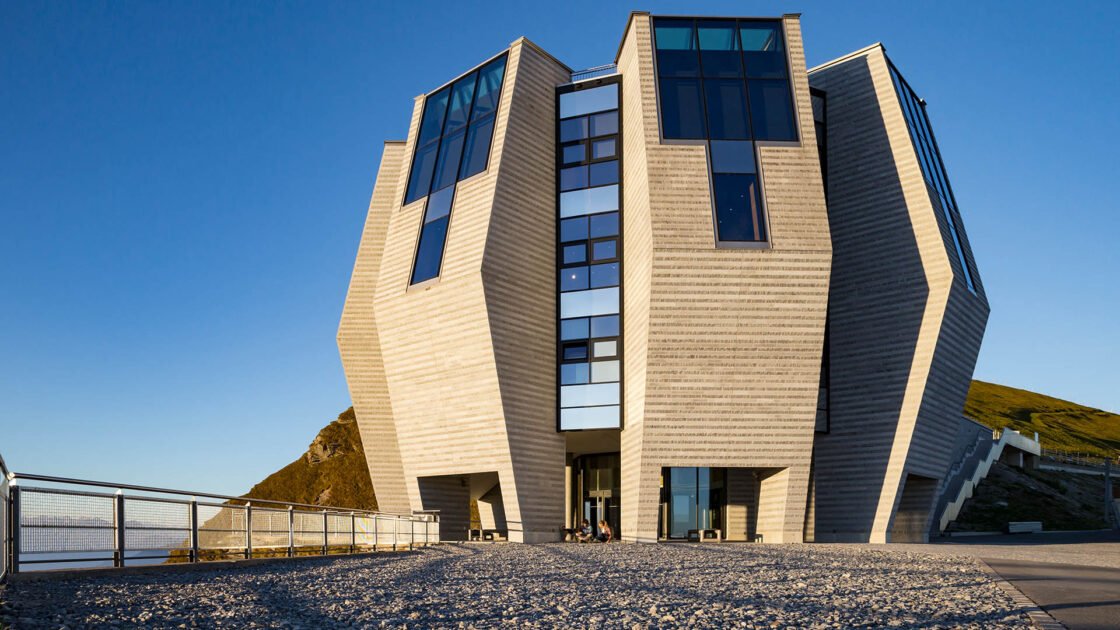
Photo courtesy of ticino.ch
20. Fiore di Pietra – Monte Generoso
Why Visit?
The Fiore di Pietra (“Stone Flower”) is a masterpiece by architect Mario Botta, perched at 1,704 m on Monte Generoso. Its octagonal, petal-like towers clad in grey Lodrino gneiss and reinforced concrete make it a striking contrast to the rugged alpine plateau. Inside, floor-to-ceiling glazing offers uninterrupted panoramic views—from the Italian Alps to Lake Lugano and even Milan on clear days. Beyond its design, it houses a self-service restaurant, fine dining venue, exhibition space, conference room, and panoramic terrace—perfect for travelers who appreciate design, dining, and dramatic vistas.
How Visit?
You can reach the summit via the historic Monte Generoso rack railway from Capolago to Generoso Vetta station, a leisurely 40-minute scenic ride with vintage Belle Époque carriages. From the upper station, the Fiore di Pietra is just steps away. If you prefer walking, there are marked trails from Bellavista, Mendrisio, or Capolago—ranging from moderate to more challenging hikes depending on the route you choose.
Tips for Visit:
- For the best views—and cooler temps—plan for early morning or late afternoon to catch the sunrise or sunset over the Pre‑Alps and Po Valley.
- Combine options: take the cog railway up and descend on foot (or vice versa) to enjoy different perspectives and hiking terrain. The hike from Bellavista through forest to alpine meadows takes about 1.5 h.
- Bring sunscreen, a light jacket, and always carry water—even a short walk near the summit can be windy and exposed.
- Dining: reserve in advance especially in high season at the à la carte restaurant (open 11:30–14:30), which serves regional Ticino dishes and wines. Don’t miss the self-service and rooftop terrace for lighter fare with stunning views.
Final Thoughts
Switzerland’s architectural landscape is a fascinating mix of history, modernity, and sustainability. Whether exploring medieval castles, avant-garde museums, or high-tech skyscrapers, visitors can witness the country’s dedication to preserving its heritage while embracing the future of design. These remarkable buildings are not just structures; they tell the story of Switzerland’s cultural evolution and architectural ingenuity.
P.S. Have you visited any of these 20 Modern Buildings in CH? Which one is your favorite? Let me know in the comments! 🏰🏙️🚀
P.S.S. While looking at all these creative structural expressions, you may want to consult this great list of 150 Weird Words Architects Use to help you grapple with all the strange, outlandish concepts within architecture and, just maybe, finally, grasp the phrase that says what you did and didn’t like about a “space” or “concept” (“the Push/Pull was off for me” or “Loved how the Exteriority pulled all the way through the first floor layout” and finally hit the nail on it’s head!
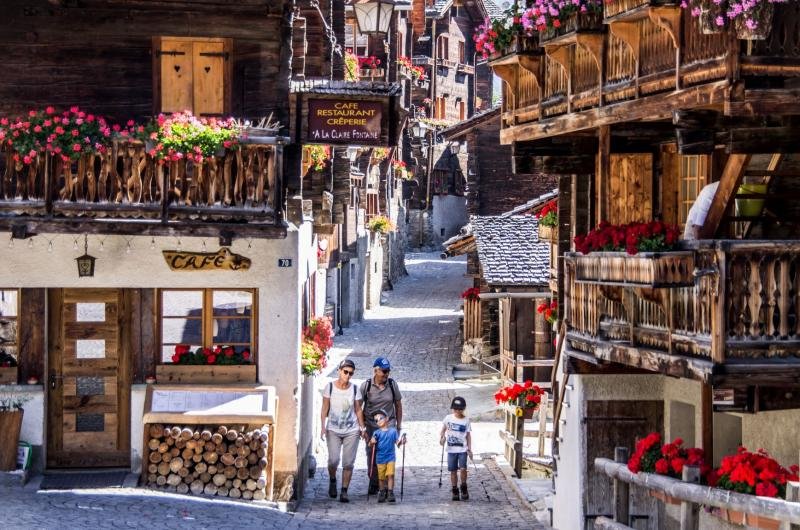

Leave a Reply